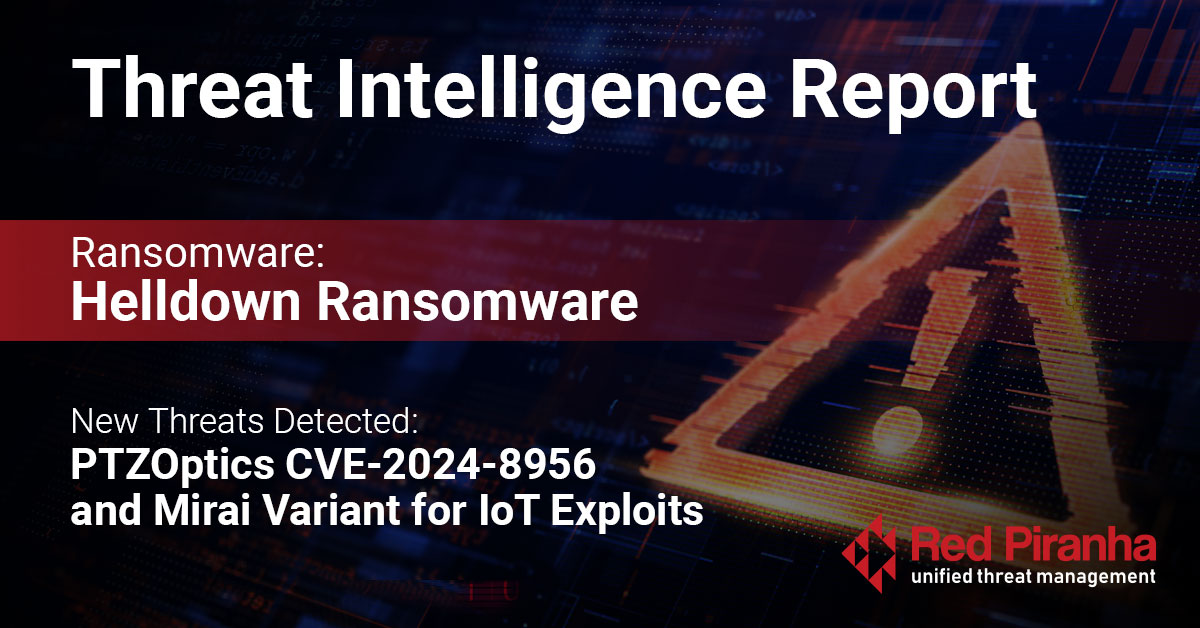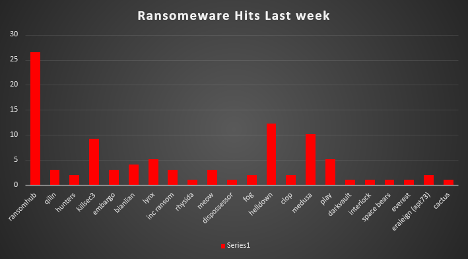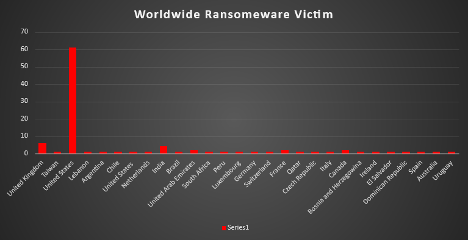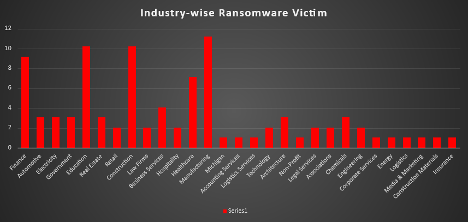
| New Threat Detection Added | 2 (PTZOptics CVE-2024-8956 and Mirai Variant for IoT Exploits) |
| New Threat Protections | 140 |
Weekly Detected Threats
The following threats were added to Crystal Eye XDR this week:
Threat name: | PTZOptics CVE-2024-8956 | ||||||||||||||||||
PTZOptics PT30X-SDI/NDI-xx before firmware 6.3.40 is vulnerable to an insufficient authentication issue. The camera does not properly enforce authentication to /cgi-bin/param.cgi when requests are sent without an HTTP Authorisation header. The result is a remote and unauthenticated attacker can leak sensitive data such as usernames, password hashes, and configuration details. Additionally, the attacker can update individual configuration values or overwrite the whole file. | |||||||||||||||||||
Threat Protected: | 02 | ||||||||||||||||||
Rule Set Type: |
| ||||||||||||||||||
Class Type: | Attempted-admin | ||||||||||||||||||
Kill Chain: |
| ||||||||||||||||||
Threat name: | Mirai Variant for IoT Exploits | ||||||||||||||||||
A new variant of the Mirai botnet has emerged, exploiting multiple vulnerabilities in Internet of Things (IoT) devices to expand its botnet network. This variant incorporates several known exploits, including:
By leveraging these vulnerabilities, the botnet gains unauthorised access to devices, integrating them into its network for potential malicious activities such as distributed denial-of-service (DDoS) attacks. | |||||||||||||||||||
Threat Protected: | 02 | ||||||||||||||||||
Rule Set Type: |
| ||||||||||||||||||
Class Type: | Attempted-admin | ||||||||||||||||||
Kill Chain: |
| ||||||||||||||||||
Known exploited vulnerabilities (Week 1 - November 2024)
Threat | CVSS | Description | |
CVE-2024-8956 | 9.1 (Critical) | PTZOptics PT30X-SDI/NDI Cameras Authentication Bypass Vulnerability | |
CVE-2024-8957 | 9.8 (Critical) | PTZOptics PT30X-SDI/NDI Cameras OS Command Injection Vulnerability | |
CVE-2019-16278 | 9.8 (Critical) | Nostromo nhttpd Directory Traversal Vulnerability | |
CVE-2024-43093 | N/A – undergoing analysis | Android Framework Privilege Escalation Vulnerability | |
CVE-2024-5910 | 9.3 (Critical) | Palo Alto Expedition Missing Authentication Vulnerability |
For more information, please visit the Red Piranha Forum:
https://forum.redpiranha.net/t/known-exploited-vulnerabilities-catalog-1st-week-of-november-2024/522
Updated Malware Signatures (Week 1 - November 2024)
Threat | Description | |
Qakbot | A malware designed to acquire valuable data such as banking credentials and is also capable of stealing FTP credentials and spreading across a network by utilising SMB. | |
Lumma Stealer | A type of malware classified as an information stealer. Its primary purpose is to steal sensitive information from infected systems, including but not limited to credentials, financial information, browser data, and potentially other personal or confidential information. | |
njRAT | A remote access trojan typically spreads using phishing emails or social engineering tactics. It allows a threat actor to steal sensitive information, install additional malware, and control the victim's machine remotely. |
| Ransomware Report | |
The Red Piranha Team conducts ongoing surveillance of the dark web and other channels to identify global organisations impacted by ransomware attacks. In the past week, our monitoring revealed multiple ransomware incidents across diverse threat groups, underscoring the persistent and widespread nature of these cyber risks. Presented below is a detailed breakdown of ransomware group activities during this period. | |
| Name of Ransomware Group | Percentage of new Victims last week |
26.53% | |
Qilin | 3.06% |
Hunters | 2.04% |
Killsec3 | 9.18% |
Embargo | 3.06% |
Bianlian | 4.08% |
Lynx | 5.1% |
INC Ransom | 3.06% |
1.02% | |
Meow | 3.06% |
Dispossessor | 1.02% |
2.04% | |
Helldown | 12.24% |
2.04% | |
10.2% | |
5.1% | |
Darkvault | 1.02% |
Interlock | 1.02% |
Space bears | 1.02% |
Everest | 1.02% |
Eraleign (APT73) | 2.04% |
Cactus | 1.02% |

Helldown Ransomware Group Report
The Helldown Ransomware Group is an emerging threat actor specialising in ransomware attacks across various sectors. Their operations have expanded globally, targeting multiple industries and countries. This report provides detailed insights into their activities based on recent findings.
Key Findings
- New Domain Discovered: A new domain linked to Helldown has been identified, indicating active development and expansion.
- Indicators of Compromise (IOCs): Multiple file hashes, IP addresses, and domains have been associated with the group's malicious activities.
- Targeted Industries and Countries: The group targets a wide range of industries and countries, suggesting a broad attack surface.
- Attack Techniques: Utilisation of exploitation for privilege escalation and spear phishing attachments as primary attack vectors.
Detailed Tactics and Techniques
- Spearphishing Attachment (T1193): The group uses targeted phishing emails with malicious attachments to gain initial access to victim networks. These attachments may contain malware or exploit code that, when opened, executes malicious payloads.
- User Execution (T1204): Requires the user to perform an action to execute the malicious code, such as opening a file or enabling macros.
- Boot or Logon AutoStart Execution (T1547): The malware may install itself to run automatically upon system startup or user logon.
- Exploitation for Privilege Escalation (T1068): Exploiting vulnerabilities in the operating system or installed applications to gain higher-level permissions.
- Obfuscated Files or Information (T1027): The malware may use obfuscation techniques to hide its code and evade detection.
- Disable Security Tools (T1562): Attempting to disable antivirus and other security solutions
- Credential Dumping (T1003): Obtaining account credentials to move laterally within the network.
- Network Service Scanning (T1046): Scanning the network to identify open services and potential targets.
- Remote Service Execution (T1021): Moving between systems within the network using remote services.
- Data from Local System (T1005): Collecting files and sensitive information from the infected system.
- Exfiltration Over C2 Channel (T1041): Sending collected data back to the attacker over established Command-and-Control channels.
Infrastructure
- Domains and IP Addresses:
- Domains:
- helldown.org (surface web)
- onyxcb44xvqra35m3lp3z26kf2pxrlbn64nbzvyvzjyc3uykzrwcjdid.onion (dark web)
- IP Addresses:
- Multiple IPs associated with their C2 infrastructure (e.g., 20.190.159.68, 51.11.168.232).
- Usage:
- Hosting Command-and-Control servers.
- Data exfiltration points.
- Hosting victim payment portals on the dark web.
- Domains:
Indicators of Compromise
FileHash-MD5 | 140aad1f823157222af3da2d23de8789 |
FileHash-MD5 | 5e7f5bb24a7cdaabcf3d2e77ed31fa4e |
IPv4 | 162.255.119.18 |
IPv4 | 20.190.159.68 |
IPv4 | 20.223.35.26 |
IPv4 | 51.11.168.232 |
IPv4 | 52.168.112.66 |
IPv4 | 63.250.36.235 |
domain | helldown.org |
domain | onyxcb44xvqra35m3lp3z26kf2pxrlbn64nbzvyvzjyc3uykzrwcjdid.onion |
domain | onyxcgfg4pjevvp5h34zvhaj45kbft3dg5r33j5vu3nyp7xic3vrzvad.onion |
domain | onyxcym4mjilrsptk5uo2dhesbwntuban55mvww2olk5ygqafhu3i3yd.onion |
IPv4 | 192.229.221.95 |
IPv4 | 199.232.210.172 |
A recent analysis of ransomware impacts across various countries highlights the United States as the most affected, with a dominant 62.24% of incidents. Following are the United Kingdom, which had 6.12% of the total attacks, and India, which had 4.08%. Canada, France, and the United Arab Emirates each recorded 2.04% of total incidents. Several other nations including Taiwan, Lebanon, Argentina, Chile, Netherlands, Brazil, South Africa, Peru, Luxembourg, Germany, Switzerland, Qatar, Czech Republic, Italy, Bosnia and Herzegovina, Ireland, El Salvador, Dominican Republic, Spain, Australia, and Uruguay observed minimal impacts at 1.02% each. This distribution underscores the global reach and varied impact of ransomware attacks, with a clear concentration in North America, particularly the United States.

Analysis of ransomware impacts across various industries reveals that Manufacturing is the most affected sector, accounting for 11.22% of incidents. Close behind are the Education and Construction industries, each experiencing 10.2% of attacks. The Finance sector also faces significant risk, comprising 9.18% of incidents, while Healthcare represents 7.14%.
Other notable sectors include Business Services at 4.08%, and industries like Automotive, Electricity, Government, Real Estate, Architecture, and Chemicals, each with 3.06% of incidents. Sectors such as Retail, Law Firms, Hospitality, Technology, Legal Services, Associations, and Engineering each account for 2.04% of attacks.
A variety of other industries—including Accounting Services, Logistics Services, Non-Profits, Corporate Services, Energy, Media & Marketing, Construction Materials, and Insurance—each experienced 1.02% of incidents. This data highlights the extensive reach of ransomware attacks across multiple sectors, with particularly heavy impacts on the Manufacturing, Education, and Construction industries.

Industries | % age of Country |
Finance | 9.18% |
Automotive | 3.06% |
Electricity | 3.06% |
Government | 3.06% |
Education | 10.2% |
Real Estate | 3.06% |
Retail | 2.04% |
Construction | 10.2% |
Law Firms | 2.04% |
Business Services | 4.08% |
Hospitality | 2.04% |
Healthcare | 7.14% |
Manufacturing | 11.22% |
Michigan | 1.02% |
Accounting Services | 1.02% |
Logistics Services | 1.02% |
Technology | 2.04% |
Architecture | 3.06% |
Non-Profit | 1.02% |
Legal Services | 2.04% |
Associations | 2.04% |
Chemicals | 3.06% |
Engineering | 2.04% |
Corporate Services | 1.02% |
Energy | 1.02% |
Logistics | 1.02% |
Media & Marketing | 1.02% |
Construction Materials | 1.02% |
Insurance | 1.02% |
Here are essential measures to mitigate the risk of Helldown ransomware and similar threats:
- Enhance Email Filters: Upgrade your email security to automatically detect and block phishing emails that might contain malicious attachments or links.
- Regular Software Updates: Always keep your operating systems and software up to date. Installing the latest updates and patches fixes security vulnerabilities that hackers could exploit.
- Install Antivirus Programs: Use trusted antivirus and endpoint protection software on all devices to detect and remove malware.
- Monitor for Threats: Keep an eye out for known signs of compromise, such as specific malicious files or unusual network activity related to Helldown.
- Divide Your Network (Segmentation): Break your network into smaller, isolated sections. This way, if one part is compromised, the attacker can't easily access the rest.
- Control Access to Sensitive Data: Limit who can access important information. Only grant permissions to those who absolutely need it for their job.
- Least Privilege Principle: Give employees the minimum level of access necessary to perform their duties. This reduces potential damage if an account is breached.
- Enable Multi-Factor Authentication (MFA)
- Backup Important Data: Consistently back up your essential data and store copies offline or in a secure cloud service that's not constantly connected to your network.
- Test Your Backups
- Develop an Incident Response Plan: Create a clear plan outlining the steps to take if a ransomware attack occurs. Include roles, responsibilities, and communication strategies.
